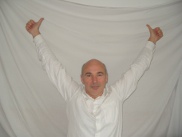How Do Mind/Body Techniques Work?
How Do Mind/Body Techniques Work?
Mind/body techniques a re holistic - affecting a lot of our systems. This explanation focuses on the aspects of muscle tension and the Autonomic Nervous System which are fundamental.
How Do Mind/Body Techniques Work?
Some Terms
- SNS - Sympathetic Nervous System. Triggers our Fight or Flight and other defensive reflexes
- PSNS - Para Sympathetic Nervous System. The "rest and digest" system.
- ANS - Autonomic Nervous System - comprised of the SNS & the PSNS.
- Trauma - Used here means anything that involves a negative reaction. These range from massive traumas like war or sexual asualt, down to more minor ones like feeling left out or insulted.
- Stress - Stress can refer to more minor trauma. It is often used interchangeabley.
- Stressors - these are things that have the potential to cause stress/trauma. They can be external like a loud bang which makes us jump to being loved badly as a child. They can be internal - like our mind being in a loop of constant negative thinking telling use we are bad or a failure. Or our mind worrying about things that it is not logical to worry about.
The Problem of Stress and Trauma
Due to our modern environment being so different to the one we evolved in a normal person has an imbalanced ANS. The PSNS can't cope with the constant firing of the SNS so our systems retain muscle tension and psychological trauma.
The PSNS being over-active means our negative reactions are more powerful and fire at a lower level of stimulus. A person with a well balanced ANS is less likely to react to a minor stressor and will react less strongly to a more major stressor. We use the word Stoic to describe a person who copes well with adversity. Most people don't realise the ancient Greek Stoics were like this because they used meditation to adjust their system not just because they thought staying calm was a good idea.
The Solution
Mind body methods at their best allow the PSNS to bring the ANS back to a far better balance. This releases the muscle tension and the trauma - these being very closely related.
<
How Does the Alexander Technique Work
I did one year of a 3 year Alexander Technique teacher training course and came up with this view of how hands on AT works. I wasn'y happy with the explanations supplied by Alexander and how they had not changed despite the knowledge coming to us from science and from the eastern mind/body techniques.
AT utilises some form of communication - maybe mirror neurons. The teacher's nervous system is calmer than the pupils. Their hands calm the pupils nervous system and this mirrors back to the teacher in a feed back loop.
AT Chair - Terms
-
Sympathetic Nervous System (SNS) - the system that triggers defensive reflexes like fight-or-flight. These involve tensing of muscles.
- Parasympathetic Nervous System (PSNS) - the system that balances the SNS in action and releases the residual effects afterwards. This is release of muscle tension and repressed emotion (psychophysical unity). The PSNS fails to work well in 2 key areas -the release of residual muscle tension/ repressed emotion and in action antagonistic tension is often engaged as a result of over-firing of defensive reflexes. Inhibition of this tension is a key part of the AT.
- Autonomic Nervous System (ANS) - Comprised of the SNS & PSNS.
- Neuron Mirroring - A mechanism where aspects of a persons nervous system state are replicated in another person, including changes in the ANS balance. Input that triggers mirroring can come via the eyes, ears or touch.
AT Chair - How it Works
When the pupil stands their SNS massively over fires and their PSNS fires to try to damp it down. This activity is mirrored to the teacher. The teacher Inhibits the SNS excitation but the PSNS still fires strongly creating a large imbalance in favour of the PSNS. This mirrors to the pupil who experiences the same imbalance.
In AT they call this an 'Experience of a new Manner of Use'. It involves a period of operating with the ANS in a much better state of balance. The reduced power of the SNS over-firing results in reduced engagement of antagonistic tension so easier, smoother movement.
AT Table Work
It takes some training to be able to inhibit the pupils SNS over-reaction in chair work. Table work allows a teacher to mirror their calm to the pupils ANS and manipulate them to trigger much smaller SNS reactions which are felt as twitches. The teachers hands increase the pupils awareness of their proprioception so they can feel these twitches and learn to inhibit them. These are much easier to inhibit than the massive over-tensing involved in chair work. In addition moving a person with hands on stimulates the SNS directly
For me the AT was more about inhibition of the over-firing of the PSNS and the resulting tensing of muscle than of habitual behaviours. Pulling the head back and down and clutching the floor with the toes are examples of basic reflexes over-firing.
With long training and repetition eventually the PSNS stops being constantly overwhelmed by the over-firing of the SNS and the ANS moves towards a more beneficial balance permanently. The rebalancing of the ANS is responsible for the changes that occur indirectly.
 Kundalini Yoga Notts UK - Now Online With Zoom Meetings
Kundalini Yoga Notts UK - Now Online With Zoom Meetings
 Kundalini Yoga Notts UK - Now Online With Zoom Meetings
Kundalini Yoga Notts UK - Now Online With Zoom Meetings